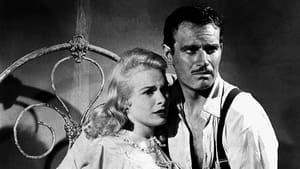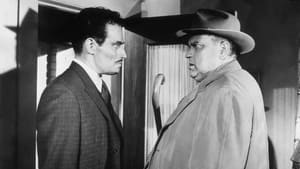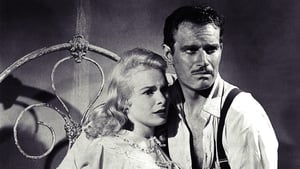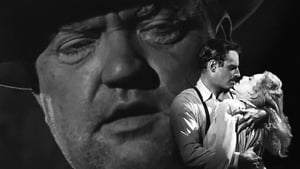Contact: [email protected]
Video Sources 0 Views
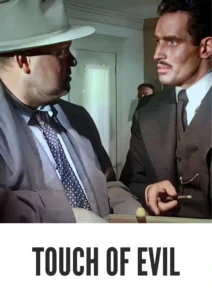
Synopsis
Review: Touch of Evil 1958 – A Noir Masterpiece Revived in Color

Introduction
Touch of Evil 1958, directed by the legendary Orson Welles, stands as a towering achievement in the film noir genre. Now, with the introduction of an early colored version, audiences have the opportunity to experience this cinematic masterpiece in a whole new light. In this article, we will delve into the impact of colorization on the viewing experience of Touch of Evil 1958, exploring its significance in the context of film history and the enduring legacy of its captivating story.
Check The Full Colorized Movies List
Check Our Colorized Movies Trailer Channel
Understanding Touch of Evil 1958: Director, Cast, and Genre
Orson Welles’ vision for Touch of Evil 1958 is nothing short of cinematic brilliance. With an ensemble cast led by Charlton Heston, Janet Leigh, and Welles himself, the film boasts performances that are as mesmerizing as they are unforgettable. Set against the backdrop of a seedy border town, Touch of Evil 1958 blurs the lines between law and order, morality and corruption, leaving audiences on the edge of their seats from start to finish. Its genre-bending narrative and groundbreaking cinematography have solidified its place as one of the most influential films of the 20th century.
Exploring the World of Touch of Evil 1958: Plot and Characters
Touch of Evil 1958 follows the investigation of a murder along the U.S.-Mexico border, unfolding a web of deceit and deception that ensnares everyone it touches. Charlton Heston stars as Ramon Miguel Vargas, a Mexican narcotics officer who finds himself embroiled in the case, while Janet Leigh plays his wife, Susan, whose innocence becomes a casualty of the investigation. Orson Welles delivers a mesmerizing performance as Captain Hank Quinlan, a corrupt and morally ambiguous police detective whose methods blur the line between justice and vengeance. As the investigation unfolds, alliances are tested, and loyalties are shattered, leading to a shocking climax that will leave audiences reeling.
The Art of Film Colorization
Film colorization has long been a controversial topic in the world of cinema. While purists argue for the preservation of the original black and white format, colorization offers a unique opportunity to breathe new life into classic films, introducing them to a new generation of audiences. By adding color to the visual palette, filmmakers can enhance the mood and atmosphere of a scene, immersing viewers in the world of the film in ways previously unimaginable. While some may argue that colorization compromises the integrity of the original work, others see it as a valuable tool for preserving and reimagining classic cinema for modern audiences.
Early Colored Films: A Brief History
The history of early colored films is a fascinating journey through the evolution of cinema technology. From the hand-tinted frames of silent films to the advent of Technicolor and Eastmancolor processes, filmmakers have long sought to bring vibrant hues to the silver screen. However, it wasn’t until the development of digital colorization techniques in the late 20th century that the practice truly came into its own, allowing for greater precision and fidelity in the recreation of colorized images. Today, early colored films offer a unique window into the past, showcasing the ingenuity and creativity of filmmakers who sought to push the boundaries of visual storytelling.
Touch of Evil 1958 and Its Early Colored Version
The decision to release Touch of Evil 1958 in a colorized format represents a bold and innovative approach to film preservation and restoration. By introducing color to this classic noir thriller, audiences are given the opportunity to experience the film in a whole new way, rediscovering its magic through a fresh set of eyes. From the neon-lit streets of the border town to the shadowy interiors of its seedy establishments, the early colored version of Touch of Evil 1958 breathes new life into every frame, elevating the film to new heights of visual splendor.
The Debate Over Film Colorization
While film colorization has its proponents and detractors, there is no denying its impact on the way we perceive and appreciate classic cinema. While some argue that colorization compromises the integrity of the original work, others see it as a valuable tool for preserving and reimagining these timeless films for modern audiences. Ultimately, the debate over film colorization speaks to the broader question of how we define and preserve cultural heritage in an ever-changing world.
Examining Touch of Evil 1958 as an Early Colored Film
In the case of Touch of Evil 1958, the early colored version enhances the film’s visual appeal without detracting from its noir sensibilities. The addition of color adds depth and dimension to the characters and settings, immersing viewers in the atmospheric world of the film in ways previously unseen. From the fiery reds of the Mexican desert to the murky greens of the riverfront slums, colorization enriches the viewing experience, allowing audiences to connect with the film on a deeper emotional level.
Influence and Legacy: Touch of Evil 1958’s Impact on Cinema
Touch of Evil 1958’s enduring legacy extends far beyond its initial release, inspiring generations of filmmakers and audiences alike. Its groundbreaking narrative and innovative visual style have left an indelible mark on the world of cinema, influencing countless filmmakers to explore the darker side of human nature. Moreover, the film’s early colored version has introduced Touch of Evil 1958 to a new generation of audiences, ensuring that its legacy will endure for years to come.
Director’s Cinematic Legacy: Beyond Touch of Evil 1958
Orson Welles’ cinematic legacy is a testament to his genius and innovation as a filmmaker. From the groundbreaking Citizen Kane to the haunting F for Fake, Welles’ films continue to captivate audiences with their bold storytelling and visionary style. His uncompromising vision and uncompromising approach to filmmaking have inspired generations of filmmakers to push the boundaries of visual storytelling and explore the depths of the human condition.
Themes Explored in Touch of Evil 1958
At its core, Touch of Evil 1958 is a meditation on the nature of good and evil in a world consumed by corruption and decay. Through its flawed yet sympathetic characters, the film explores themes of justice, redemption, and the consequences of unchecked ambition. As the narrative unfolds, we are forced to confront the darker aspects of human nature, challenging our perceptions of right and wrong and the blurred lines that separate them.
Reception and Controversy Surrounding Touch of Evil 1958
Upon its release, Touch of Evil 1958 received widespread critical acclaim for its innovative storytelling, groundbreaking cinematography, and unforgettable performances. However, the decision to release the film in a colorized format sparked controversy among purists who argued for the preservation of its original black and white presentation. Despite these concerns, the early colored version of Touch of Evil 1958 has been embraced by audiences for its faithful recreation of the film’s visual aesthetic, offering a fresh perspective on this timeless classic.
Where to Watch Touch of Evil 1958 Online
For those eager to experience Touch of Evil 1958 in all its early colored glory, the film is readily available on popular streaming platforms such as Amazon Prime Video and Netflix. Whether you’re a longtime fan or a newcomer to classic cinema, Touch of Evil 1958 offers a gripping and immersive viewing experience that is not to be missed.
FAQs About Touch of Evil 1958
- Q: Is Touch of Evil 1958 available in its original black and white format?
- A: Yes, Touch of Evil 1958 is available in both its original black and white format and its early colored version, giving viewers the option to choose the version that best suits their preferences.
- Q: How does the early colored version of Touch of Evil 1958 compare to the original black and white presentation?
- A: While the early colored version of Touch of Evil 1958 adds a vibrant new dimension to the film, some purists may prefer the timeless elegance of its original black and white presentation.
- Q: What makes Touch of Evil 1958 a classic film noir?
- A: Touch of Evil 1958 is celebrated for its dark and atmospheric storytelling, innovative cinematography, and unforgettable performances, making it a quintessential example of the film noir genre.
Conclusion
In conclusion, Touch of Evil 1958 remains a timeless masterpiece that continues to captivate audiences with its gripping narrative, innovative visual style, and unforgettable performances. Whether viewed in its original black and white format or its early colored version, the film stands as a testament to the enduring power of cinema and the visionary genius of Orson Welles. As we celebrate the legacy of Touch of Evil 1958 and the magic of film colorization, let us embrace the opportunity to rediscover this cinematic gem in all its colorful glory.
